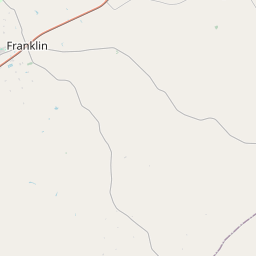Shiloh Baptist Church
Historical marker location:






The noted Baptist missionary Z.N. Morrell and others formed the Trinity River Association in this area in 1848. On August 5, 1854, in the community of Shiloh, which had been established by 1840, seven men and women joined together to organize the Shiloh (Shilo) Baptist Church of Christ. Of the members, Thomas Eaton became the first ordained pastor, A.W. Mauk the first clerk and William Clark the moderator. Clark and Clay Cobb served as the first deacons. In addition, George Fullen, Charlotte Cobb and Susannah Cobb were charter members. In 1856, Bryant W. Cobb donated two acres of land to the church, and it affiliated with the Trinity River Association. Members conducted early baptisms in tanks and creeks, and the church grew as others joined the congregation over the next decades. Families active between 1854 and 1909 included the Andersons, Barnetts, Boltons, Cobbs, Mauks, Neeleys, Packs, Smiths and Youngbloods. Church minutes from 1911 until 1940 are missing, but it is known that the congregation moved in the 1920s to land donated by the Barnett family. In the early 1950s, a church building committee made plans to construct a new sanctuary, which members dedicated at this site on April 10, 1955. Over the years, they added other facilities, including a family life building and a baptistry. During its long history, Shiloh Baptist Church has contributed to many local, state and international causes, including the Buckner Baptist Benevolences and foreign mission work. Members have been active in community functions, and the congregation remains a spiritual support center for the surrounding area. (2006)
As one of the most visible programs of the Texas Historical Commission (THC), historical markers commemorate diverse topics in Texas history, including: the history and architecture of houses, commercial and public buildings, religious congregations, and military sites; events that changed the course of local and state history; and individuals who have made lasting contributions to the state, community organizations, and businesses.
Texas is also home to the world's largest honky-tonk, Billy Bob's Texas in Fort Worth. The venue covers three acres and can hold up to 6,000 people.
In 1837, the Texas Congress officially established Robertson County as one of the original counties of the Republic of Texas. During this time, the county experienced rapid growth with the influx of settlers from the United States, particularly from southern states such as Tennessee, Mississippi, and Alabama. These settlers primarily relied on agriculture, with cotton becoming a major cash crop in the region.
The county also played a significant role in the Texas Revolution and the subsequent formation of the Republic of Texas. The Battle of San Jacinto, a decisive battle that secured Texas independence from Mexico, took place just outside the county's borders in April 1836. Several notable figures from Texas history, including Sam Houston, were also closely tied to Robertson County.
Over the years, Robertson County has continued to thrive, with the economy diversifying beyond agriculture. While farming and ranching still remain important industries, the county has also seen growth in manufacturing, healthcare, and tourism sectors. Today, Robertson County is known for its small towns, rural beauty, and historical sites, attracting visitors and residents alike with its charming Southern atmosphere and rich cultural heritage.
Robertson County Timeline
This timeline provides a glimpse into the major events and milestones that have shaped the history of Robertson County, Texas.
- 1837: Robertson County is established from Milam County.
- 1846: The first county seat, Springfield, is established.
- 1854: The county seat is moved to Owensville.
- 1870: The town of Calvert becomes the county seat.
- 1873: The Houston and Texas Central Railway reaches Calvert.
- 1890: The St. Louis Southwestern Railway reaches Hearne.
- 1925: A portion of Robertson County is used to create Falls County.
- 1942: Camp Hearne, a World War II prisoner-of-war camp, is established.
- 1987: The Hearne Southern Pacific depot is added to the National Register of Historic Places.